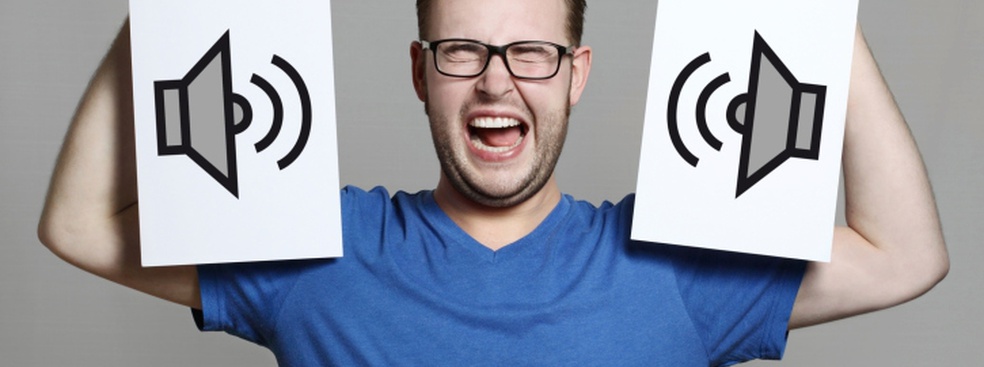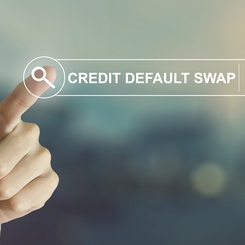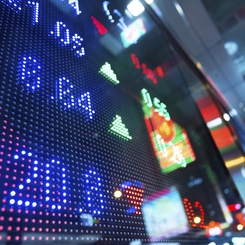There are many ways to think about companies in order to understand them better. One way is to consider a firm as a collection of assets – money, equipment, skills, brand equity – on which different people have claims. The firm’s shareholders, who provide its equity, have one claim; its creditors, who lend it cash, have another. To make informed decisions, these people need to get an accurate picture of the risks involved in investing in the firm, or lending it money. For example, investors might want to decide whether to invest in a corporate bond, which inevitably carries some risk that the firm who issued could go bust, or a Treasury bond, which is much safer but also offers much lower returns.
The structural credit risk model, developed in the 1970s, allows investors and lenders to assess the riskiness of a company in credit terms. However, this model relies on an accurate assessment of the values of a firm’s assets. Very often, these values can’t be measured accurately, because they can’t be observed directly. However, using what is called a maximum likelihood estimation (MLE) method, we can use another measure, such as the firm’s share price, to estimate the firm’s asset values (provided it is listed on a stock exchange). Even though there isn’t a direct mathematical relationship between share price and asset value, we can still arrive at a reasonable estimate with this method.
The risks associated with trading noise
One problem with this approach is ‘trading noise’. Trading noises are fluctuations in share prices driven by factors that are nothing to do with the fortunes of the firm or the value of its assets: short-term or ill-informed speculation, over-reaction to current events or illiquidity (a scarcity of stock that can drive up prices). In some markets, these noises create a false picture of how volatile a firm’s asset values are; the relationship between share price and asset value is disrupted by the noise and there is too much uncertainty involved. Trading noise is rather like interference with a broadcast TV or radio signal; it makes it harder for us to see or hear what is really going on with a firm’s assets. We need to find a way to filter it out.
Until now, users of structural credit risk models have been obliged to ignore trading noises, or resort to a completely different way to assess corporate debts. However, in 2009, using a statistical technique called auxiliary particle filtering, we developed a new model that takes them into account. Although our ideas were new in themselves, they were built on the work of several other academic researchers, going back over the last 35 years or so, as well as our own previously developed ideas and papers.
We tested our model on two sets of companies: the 30 US companies that make up the Dow Jones Industrial Average and a randomly chosen set of 100 smaller listed US companies.
We wanted to find out the extent to which trading noise affected the volatility of asset valuations, in both samples. Also, since existing structural credit risk models ignore trading noise, we also wanted to discover what the effects of ignoring trading noise might be. Was it ever safe to discount trading noise, or was it essential to find a way to take it into account?
Avoiding over-estimated volatility
For the Dow 30, we focused on daily share prices during the calendar year 2003. We found that, while some firms (such as American Express) seemed to suffer from no trading noise, six of the 30 Dow companies were susceptible to significant trading noise. However, it may be that the AmEx result was due to an inaccuracy in our model; it seems likely that every stock is subject to at least some trading noise, with some more susceptible than others.
As we’d anticipated, we found that neglecting to take trading noises into account does indeed lead to an over-estimation of the volatility of asset values, by an average of 6.66% on average. For some firms, such as 3M, ignoring trading noise resulted in a disparity of as much as 15.9%.
For our sample of 100 smaller firms, trading noise was even more significant. Again, this was as expected, since their shares are more susceptible to illiquidity and other distorting factors. We found that trading noise can make volatility estimates as much as 93.78% too high, with 10% of the firms showing a bias of 44.57% or higher.
To confirm that our model had been set up correctly, we compared our estimates of trading noise with indicators of illiquidity such as the size of the firm and the bid-ask spread. The bid-ask spread is the difference between the price at which shares can be sold, and the price they can be bought for. Shares of major companies are usually traded in high volumes, with lots of shares in circulation. This makes their share prices more stable and slow-moving, with a smaller bid-ask spread. Conversely, the shares of smaller companies are more tightly held, reducing the ‘free float’ and making their prices more volatile; for these shares, the bid-ask spread is generally wider. When we carried out our comparison, we found that our estimates of trading noises were linked to wider bid-ask spreads and thinner trading volumes. This demonstrated that our model estimated higher trading noise for shares with poor liquidity – which is in line with what we would expect in the real world.
Our research confirms that trading noise is an important factor in structural credit risk models, and needs to be taken into account. By using our new model, financial professionals can ‘filter out’ trading noise and obtain a clearer picture of structural credit risk, allowing them to make much more informed decisions about whether to invest or lend.
Further Reading:
"Estimating the Structural Credit Risk Model When Equity Prices Are Contaminated by Trading Noises'", published in Journal of Econometrics









